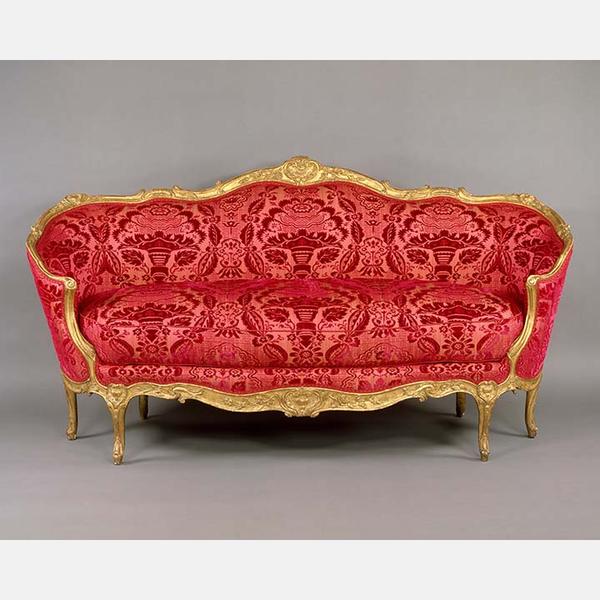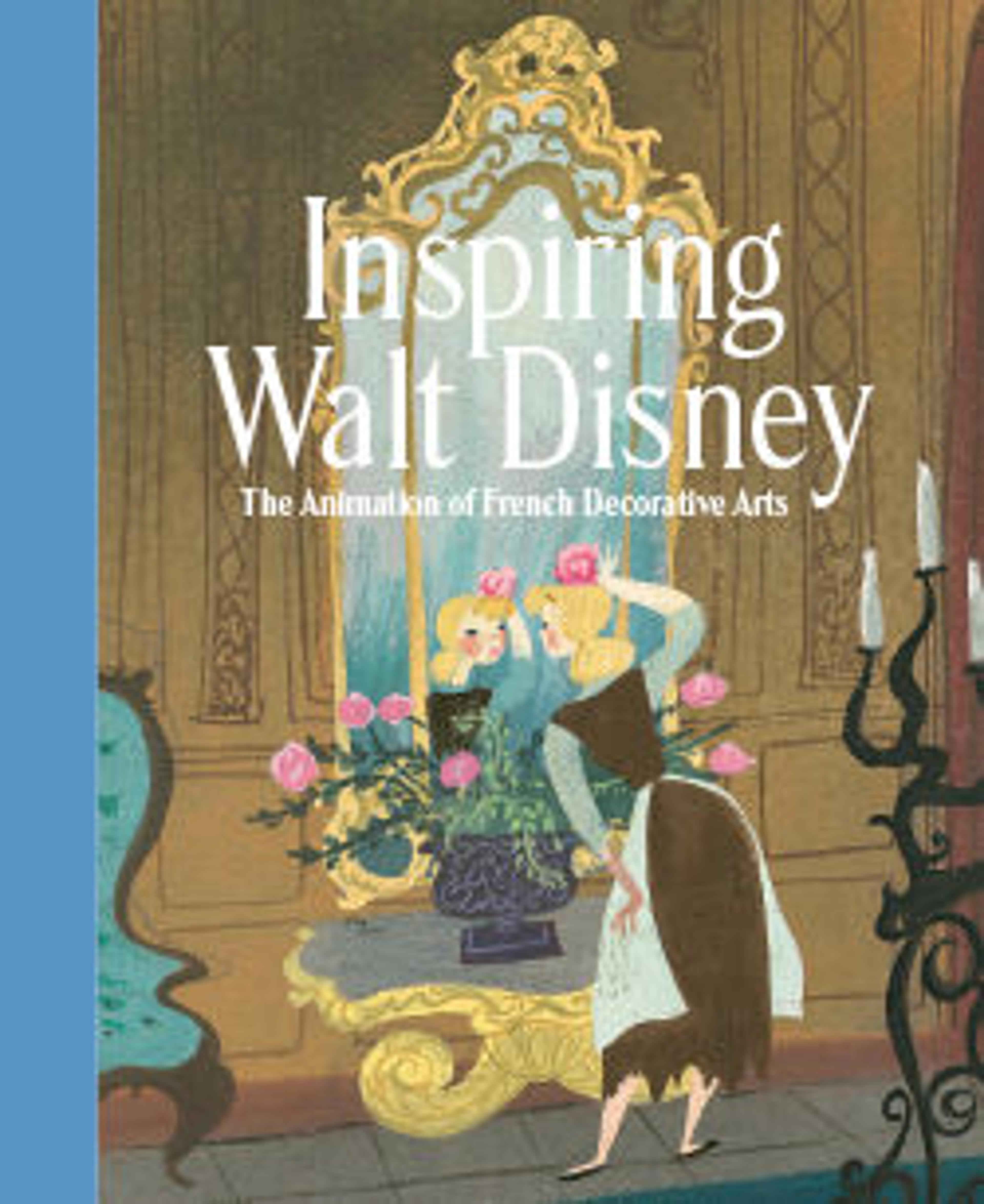Sofa (ottomane veilleuse)
Jean-Baptiste ll Tilliard became a maitre (master) in 1752 and worked with his father in a shop on the rue de Cléry until 1764, when the elder Tilliard retired. As both father and son used the stamp TILLIARD, it is sometimes difficult to distinguish their work from one another. The graceful curvilinear yet somewhat restrained outline of this sofa would indicate a date of 1750–1760, suggesting it is most likely the work of the elder since the younger Tilliard worked mostly in the Louis XVI style.
Characteristic for both craftsmen is the use of a heart-shaped cartouche as a decorative motif either in the center of the front seat rail or the top rail of the back, sometimes in both places. The same motif appears also at the top of the front legs and twice more on the top rail.
The carving of the cartouche, the rococo scrolls, and the flowering vines is closely related to that on a daybed stamped by Tilliard, now in the Victoria and Albert Museum, London.
Artwork Details
- Title:Sofa (ottomane veilleuse)
- Maker:Jean-Baptiste I Tilliard (French, 1686–1766) or
- Maker:Possibly by Jean-Baptiste II Tilliard (French, 1723–1798, master 1752)
- Date:ca. 1750–60
- Culture:French
- Medium:Carved and gilded beechwood, upholstered in modern red velours de Gênes
- Dimensions:40 1/2 in. × 78 in. × 31 in. (102.9 × 198.1 × 78.7 cm)
- Classification:Woodwork-Furniture
- Credit Line:The Jack and Belle Linsky Collection, 1982
- Object Number:1982.60.72
- Curatorial Department: European Sculpture and Decorative Arts
Audio

2299. The Sofa
Inspiring Walt Disney
WOLF BURCHARD:
As we enter this space, looking at this wonderful Rococo sofa, we want to ask ourselves one question: If this sofa could talk, what would it say? As humans, we have this incredible intuition of bringing objects to life.
PAIGE O'HARA:
Both Rococo and Disney artists tapped into that intuition for anthropomorphism—or bringing inanimate objects to life. Telling stories from the perspective of an object became a literary trend in the 1740s.
One of the most popular novels in this vein was Le Sopha, or the Sofa. It was written by Claude Prosper Jolyot de Crébillon, whose father was romantically involved with Madame de Villeneuve, author of the original Beauty and the Beast. It told the story of a courtier, who is condemned to inhabit a series of sofas, like this one. He witnesses one amorous encounter after the next. Only when he finally witnesses true love, is he transformed back into a man.
WOLF BURCHARD:
The sofa is designed almost like a basket, which is supposed to cradle the people who sit on it, the right stage for a romantic encounter. We see this represented in a painting nearby, called The Declaration of Love.
The sofa was a relatively new piece of furniture, introduced to Paris interiors at the beginning of the 18th century. So, there's this connection between the history of French interiors, interior decoration, and stories of love.
We see the Disney animators saw this potential because in the original storyboards for the Beauty and the Beast, the first scene where Gaston and Belle met, they met sitting on a sofa next to each other, so there are wonderful// serendipities here.
More Artwork
Research Resources
The Met provides unparalleled resources for research and welcomes an international community of students and scholars. The Met's Open Access API is where creators and researchers can connect to the The Met collection. Open Access data and public domain images are available for unrestricted commercial and noncommercial use without permission or fee.
To request images under copyright and other restrictions, please use this Image Request form.
Feedback
We continue to research and examine historical and cultural context for objects in The Met collection. If you have comments or questions about this object record, please contact us using the form below. The Museum looks forward to receiving your comments.
